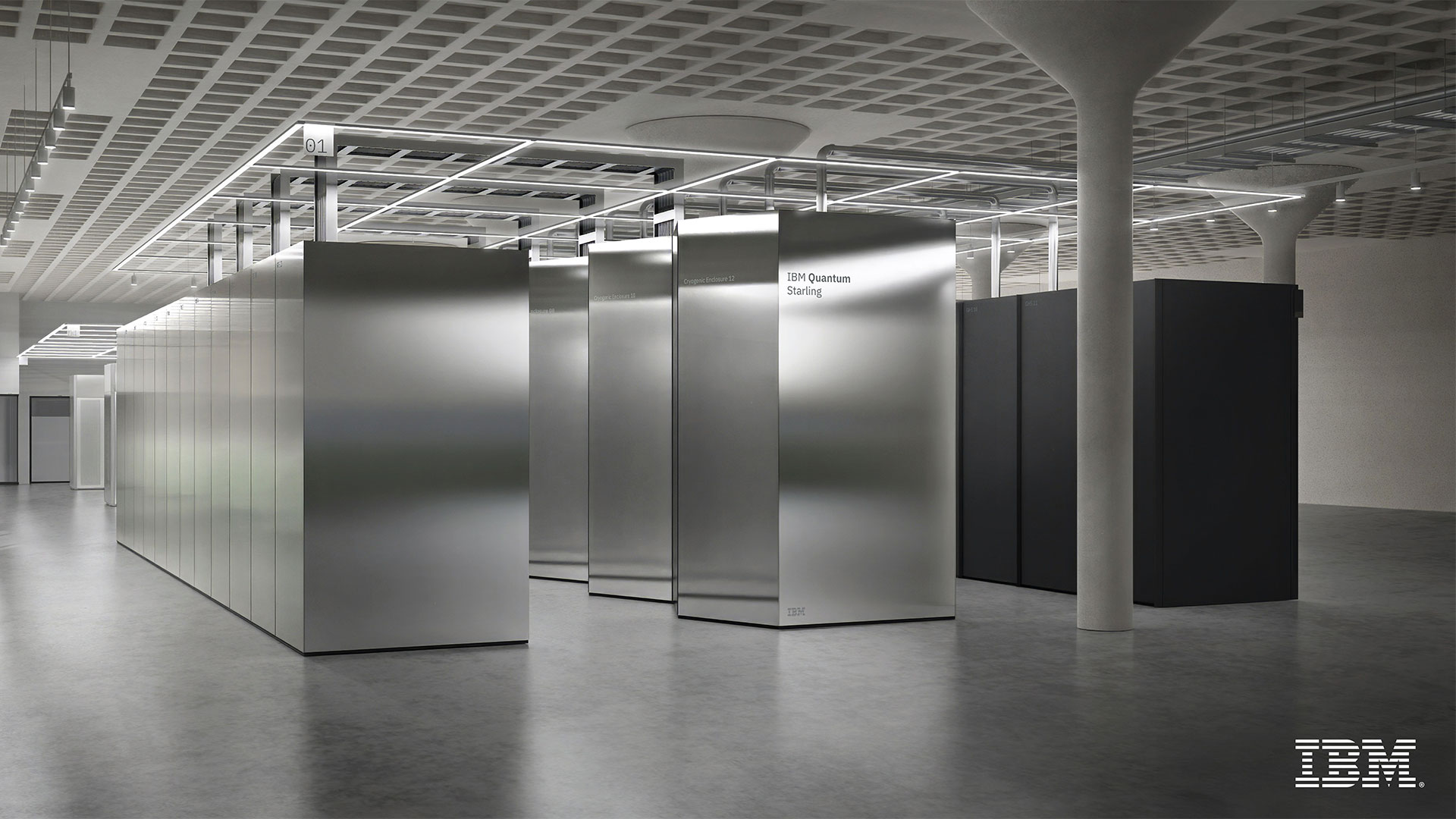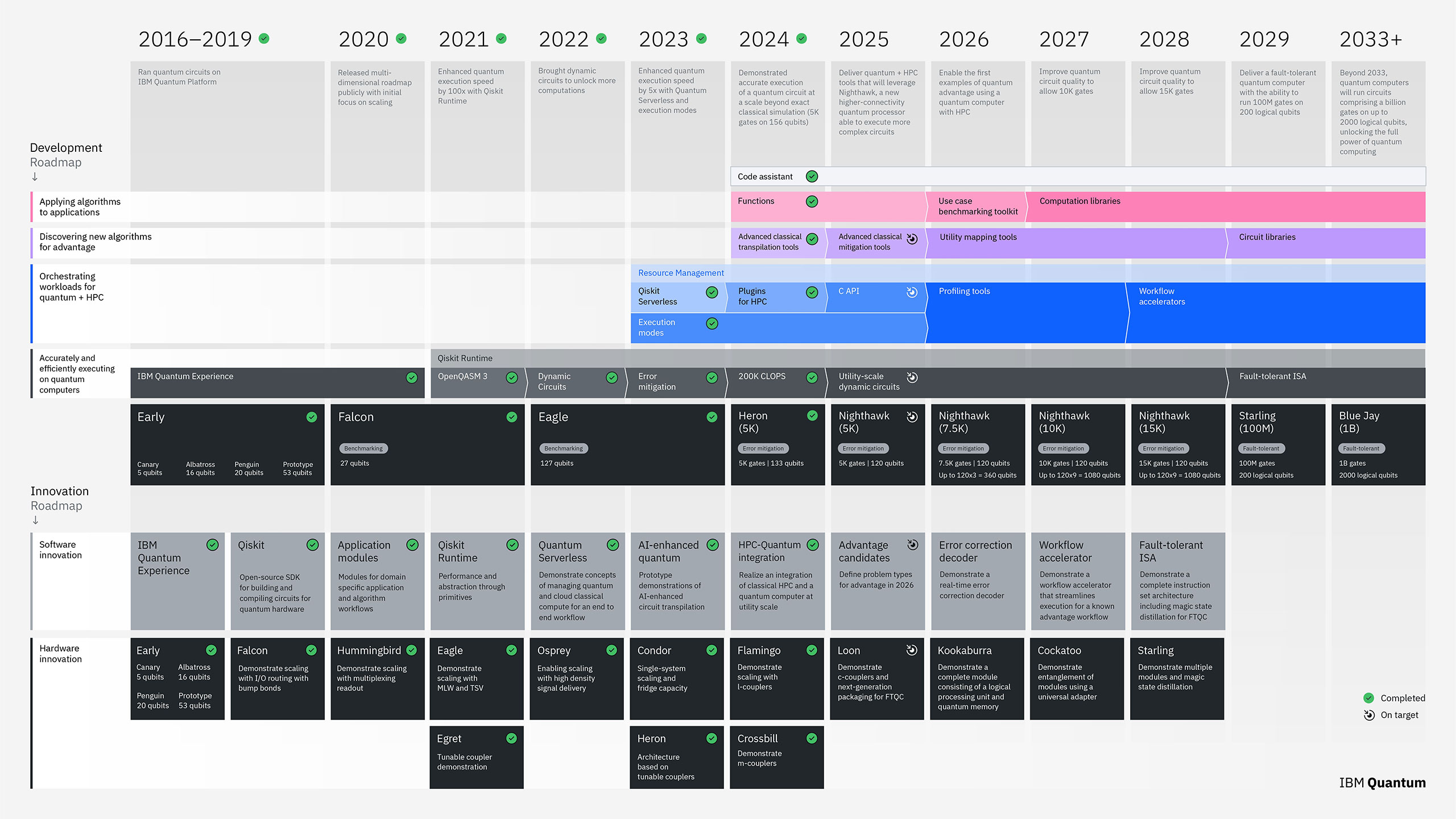IBM is building a large-scale quantum computer that 'would require the memory of more than a quindecillion of the world's most powerful supercomputers' to simulate
That's 1,000,000,000,000,000,000,000,000,000,000,000,000,000,000,000,000

IBM has shared its roadmap to deliver the “world's first large-scale, fault-tolerant quantum computer.” It claims that, due to be delivered to clients in 2029, IBM Starling will also be 20,000 times more powerful than today’s leading quantum computers. Furthermore, IBM says that to merely represent the computational state of Starling “would require the memory of more than a quindecillion (1048) of the world's most powerful supercomputers.” However, we are used to rather lofty claims in the world of Quantum Computing, so let’s take a closer look.
On its newly published roadmap, IBM has set out several milestones, which will be powered by a handful of quantum computers and processor architectures ahead of the arrival of Starling. In 2026, we will see the first tantalizing demonstration of what IBM calls ‘quantum advantage.’ This is defined as the milestone where classical computers start to be outclassed by quantum computers in practical computing applications.
IBM Quantum Loon is set to debut later this year alongside the first Nighthawk chip, so we will assume that it will be the vehicle to demonstrate this first glimpse at quantum advantage. According to IBM, this will be a platform designed to test architecture components for its new quantum low-density parity check (qLDPC) code.
IBM Quantum Kookaburra will be passed the baton sometime in 2026, says IBM. This will feature the firm's first modular processor designed to store and process encoded information. Innovations in this design will be key to scaling fault-tolerant systems beyond a single chip.
Penultimately, IBM Quantum Cockatoo is expected to roll out in 2027. IBM’s press release says that this architecture “will link quantum chips together like nodes in a larger system, avoiding the need to build impractically large chip.” That is another important nod to scalability that it hopes to put into practice by leveraging the entanglement of component modules.
All the above milestones are hoped to culminate in Starling in 2029. They bring together testing and demonstrations based on two new technical papers IBM published today, providing background detail to its proposed large-scale, fault-tolerant architecture, and direction for its roadmap.
You read the astounding claims for this hardware innovation in the intro. But for more perspective, it is claimed that Starling will be capable of “running 100 million quantum operations using 200 logical qubits.”
Get Tom's Hardware's best news and in-depth reviews, straight to your inbox.
When it arrives, Starling will “solve real-world challenges and unlock immense possibilities for business,” indicates Arvind Krishna, Chairman and CEO, IBM. Behind it there will be an architecture that can run “hundreds or thousands of logical qubits could run hundreds of millions to billions of operations,” reckons IBM. The most obvious beneficiaries of this computing power will include organizations involved in such as drug development, materials discovery, chemistry, and optimization.
IBM Starling isn’t quite the endpoint of the IBM Quantum roadmap, as published today. Its second-gen fault-tolerant quantum computing ISA will be Blue Jay. When this arrives, the computing platform may have scaled up to an astounding 1 billion gates and 2,000 logical qubits. Blue Jay isn’t expected to be here until 2033+.
Quantum advantage vs quantum supremacy
We’ve heard a lot about if and when Quantum computers will make a definitive breakthrough, and truly become practical and scalable alternatives to our present classical computing. Remember, Google was bold enough to claim quantum supremacy back in 2019, but it was soon, rather strongly, rebuked by IBM. We are pretty sure that Google would like to strike back at Big Blue with regard to quantum claims, so we shall see what they, and other quantum computing players, can do between now and 2029.
Follow Tom's Hardware on Google News to get our up-to-date news, analysis, and reviews in your feeds. Make sure to click the Follow button.

Mark Tyson is a news editor at Tom's Hardware. He enjoys covering the full breadth of PC tech; from business and semiconductor design to products approaching the edge of reason.
-
JRStern >1,000,000,000,000,000,000,000,000,000,000,000,000,000,000,000,000Reply
That's a mighty big fraud.
>IBM Quantum Loon is set to debut later this year
I think it's here already. -
Notton It's a quantum computer, it'll play Doom, Crysis, Alan Wake 2, CP2077, Cities Skylines 2, and Wukong all at the same time, while also breaking all passwords and encryption in the world.Reply -
Air2004 Reply
My only question is , how long will it take to reboot after the first Blue screen of death ?Notton said:It's a quantum computer, it'll play Doom, Crysis, Alan Wake 2, CP2077, Cities Skylines 2, and Wukong all at the same time, while also breaking all passwords and encryption in the world. -
Air2004 I can picture the cheesy commercial and tag that will follow...Reply
It will be a man and woman (insert scenario here)
Man : Oh, that's just darling.
Woman: No, honey, that's IBM Starling. -
Nir___ I'm sure that IBM can build such a powerful quantum computer and can't build such a powerful quantum computer.Reply -
PHStan Reply
My professor's cat had the same dilemma.Nir___ said:I'm sure that IBM can build such a powerful quantum computer and can't build such a powerful quantum computer. -
Eximo Reply
RGB screen of Life/Death.Air2004 said:My only question is , how long will it take to reboot after the first Blue screen of death ? -
bit_user Reply
A quantum computer isn't just a faster version of a normal computer. The way they work is by using entanglement to model and search large state-spaces. A lot of classical algorithms don't map well to that sort of architecture, which is why it's even possible to design quantum-resistant encryption.Notton said:It's a quantum computer, it'll play Doom, Crysis, Alan Wake 2, CP2077, Cities Skylines 2, and Wukong all at the same time, while also breaking all passwords and encryption in the world.
So, I rather doubt one could port games to run on it. Even if you could manage the feat, they probably wouldn't run playably fast.

